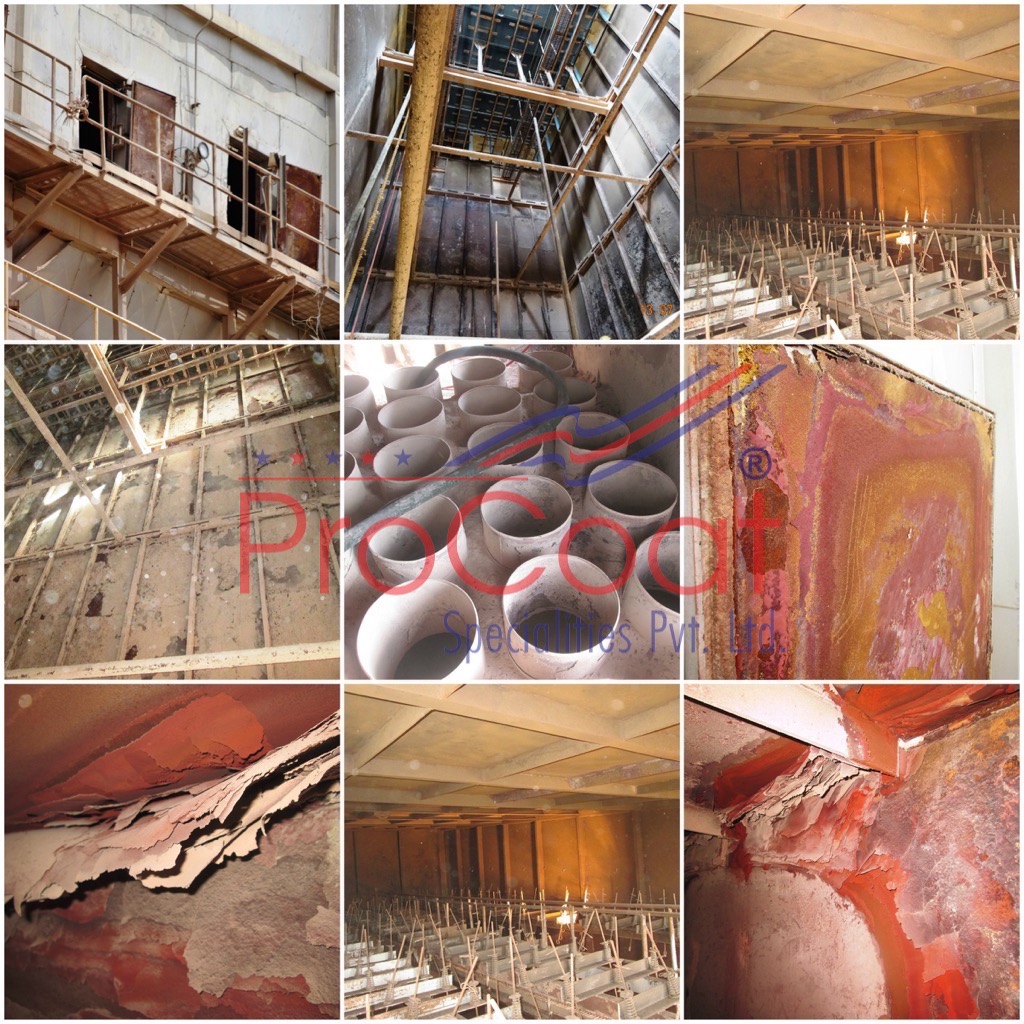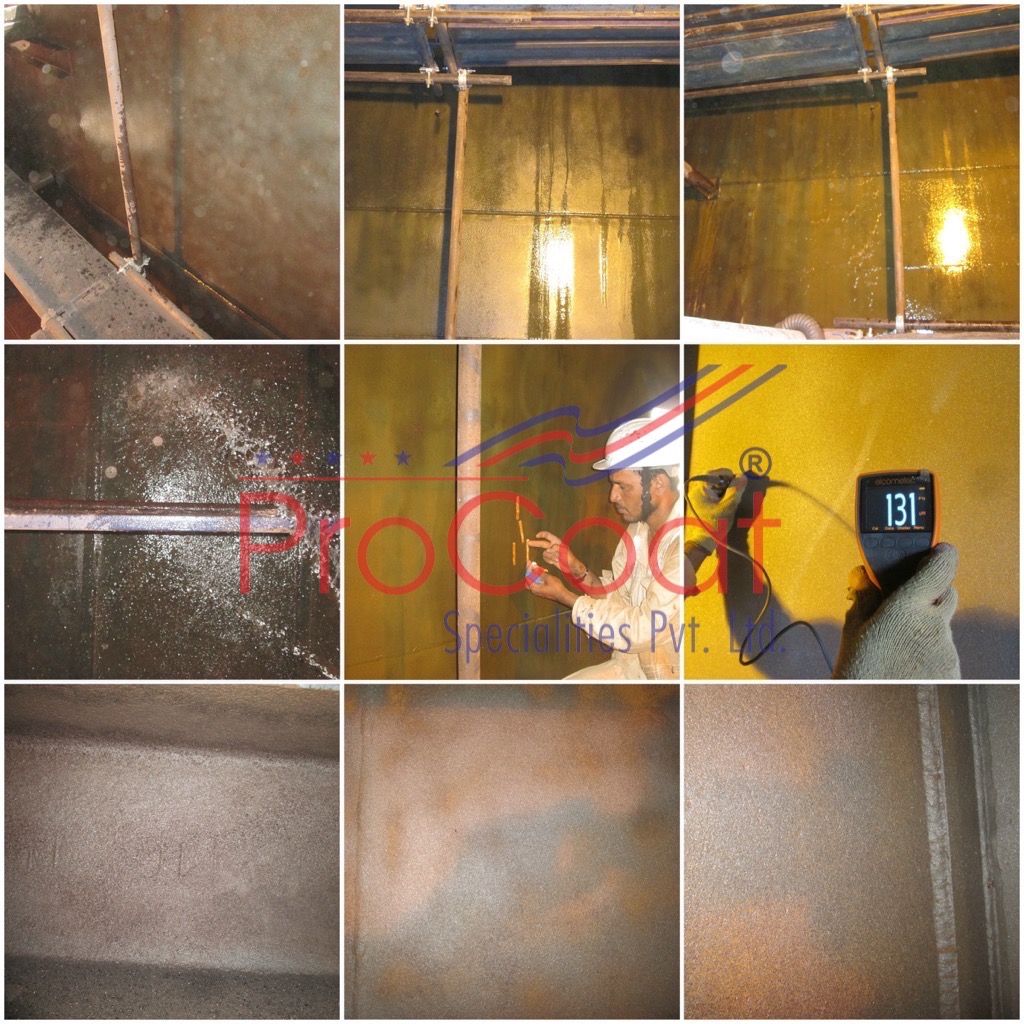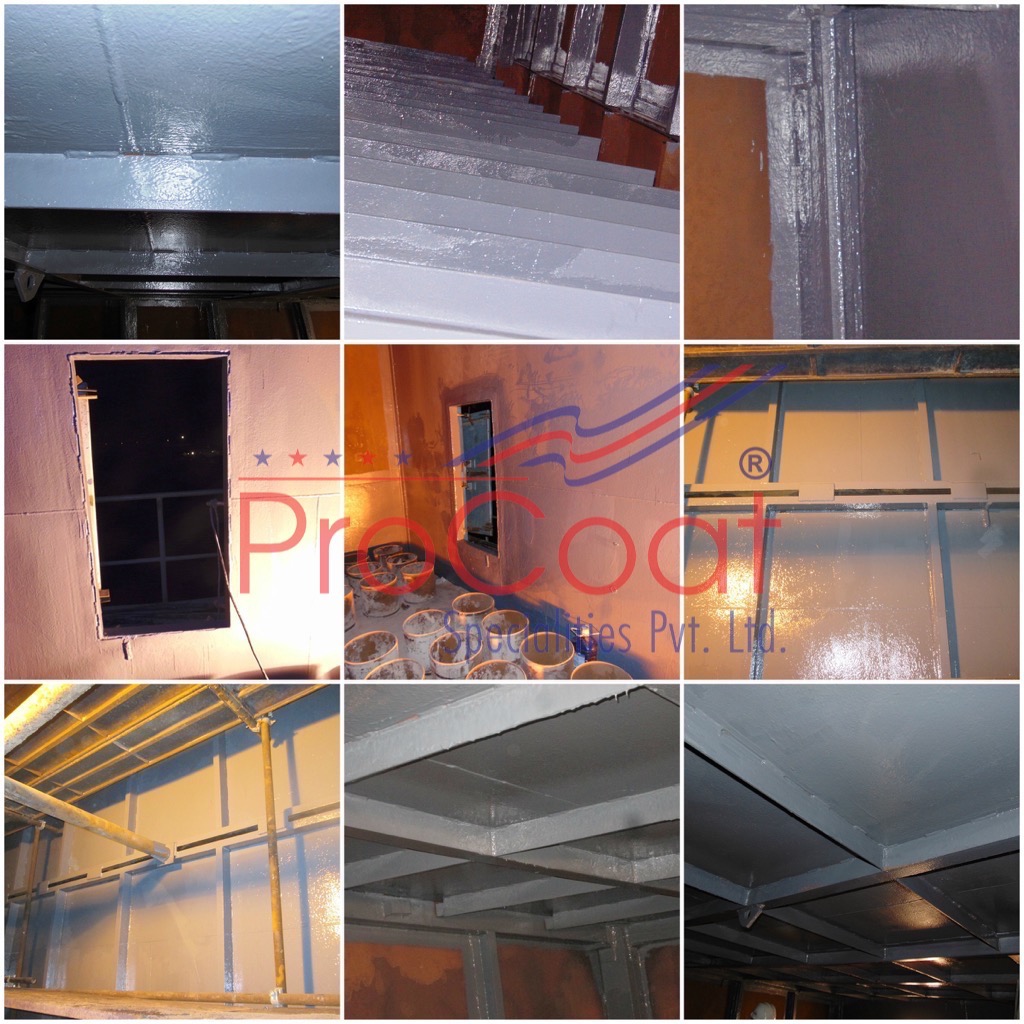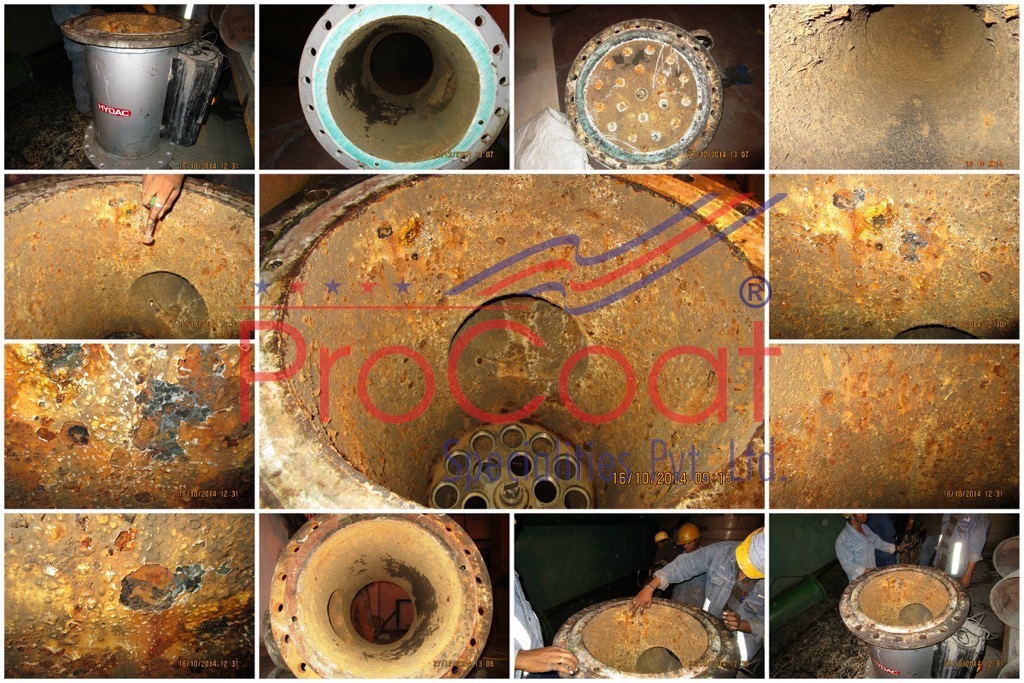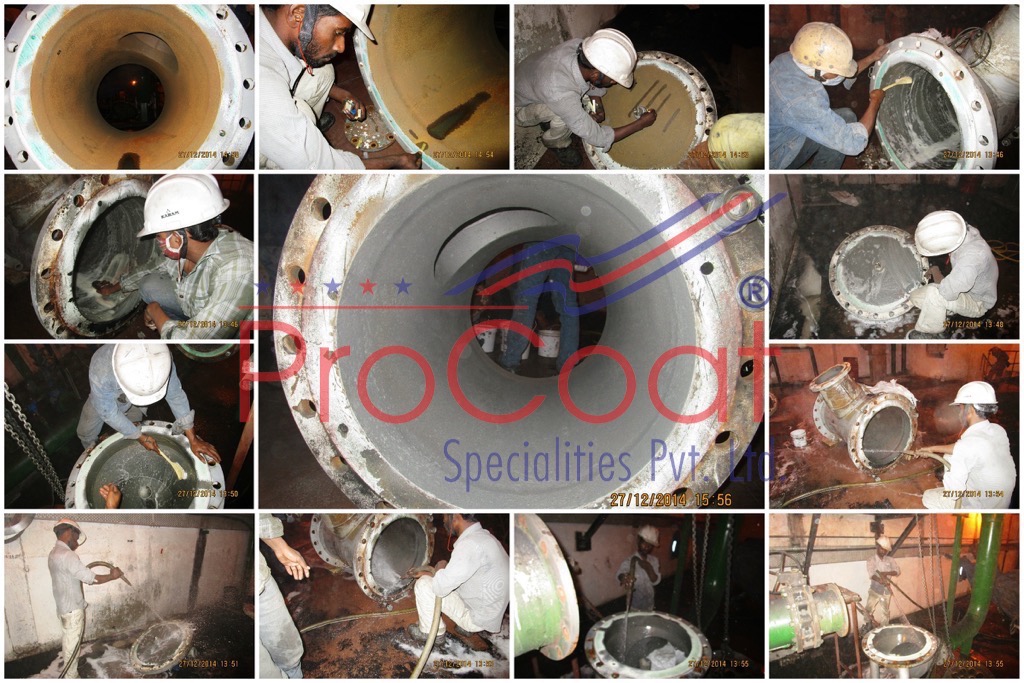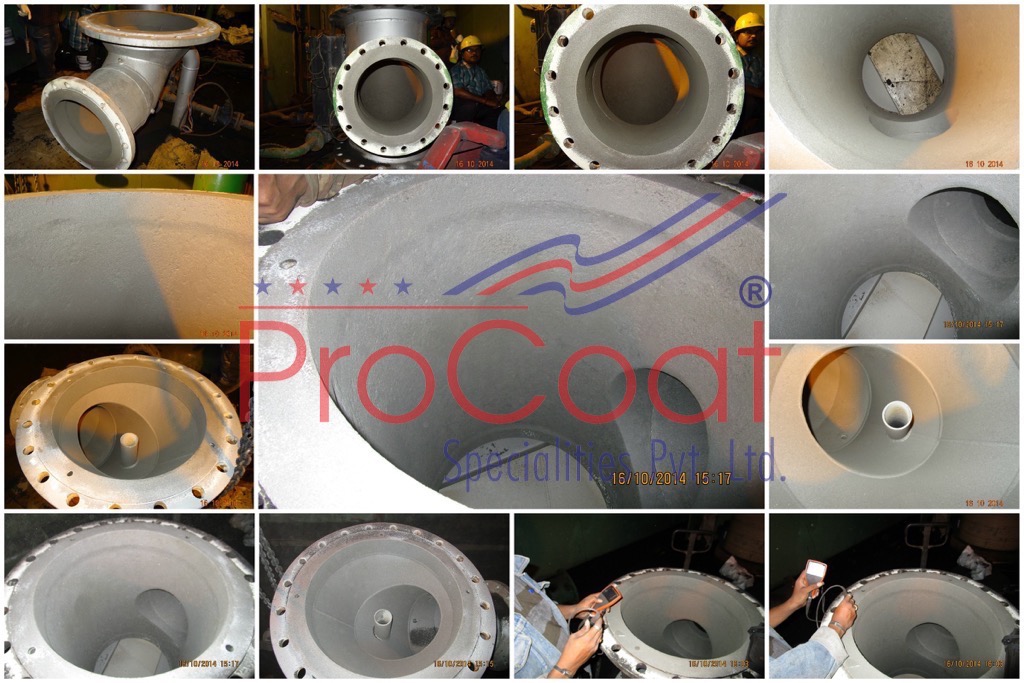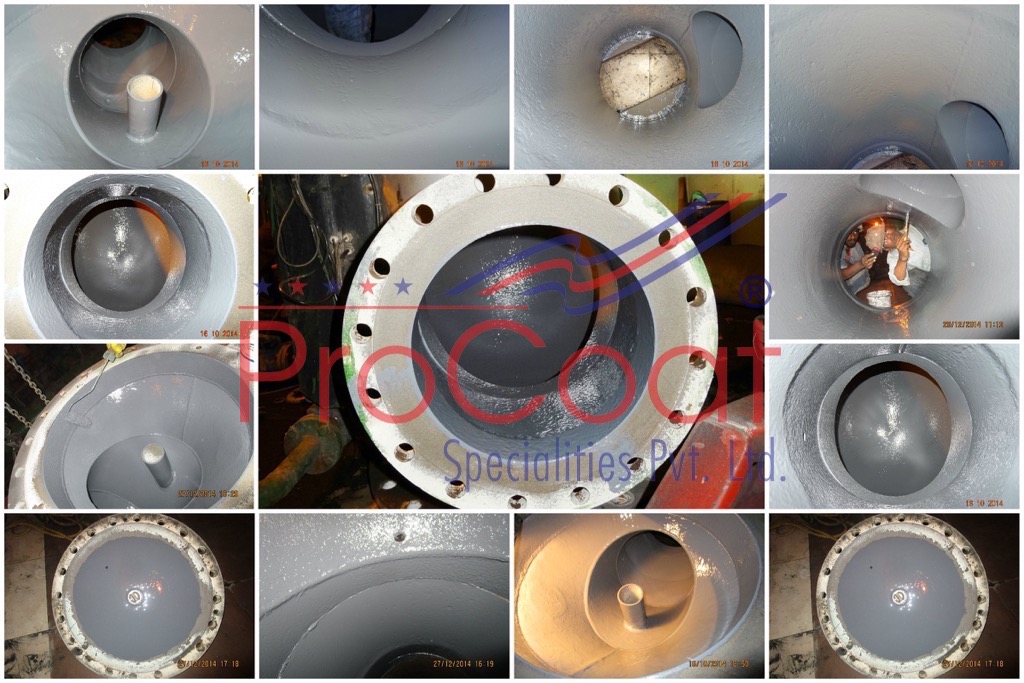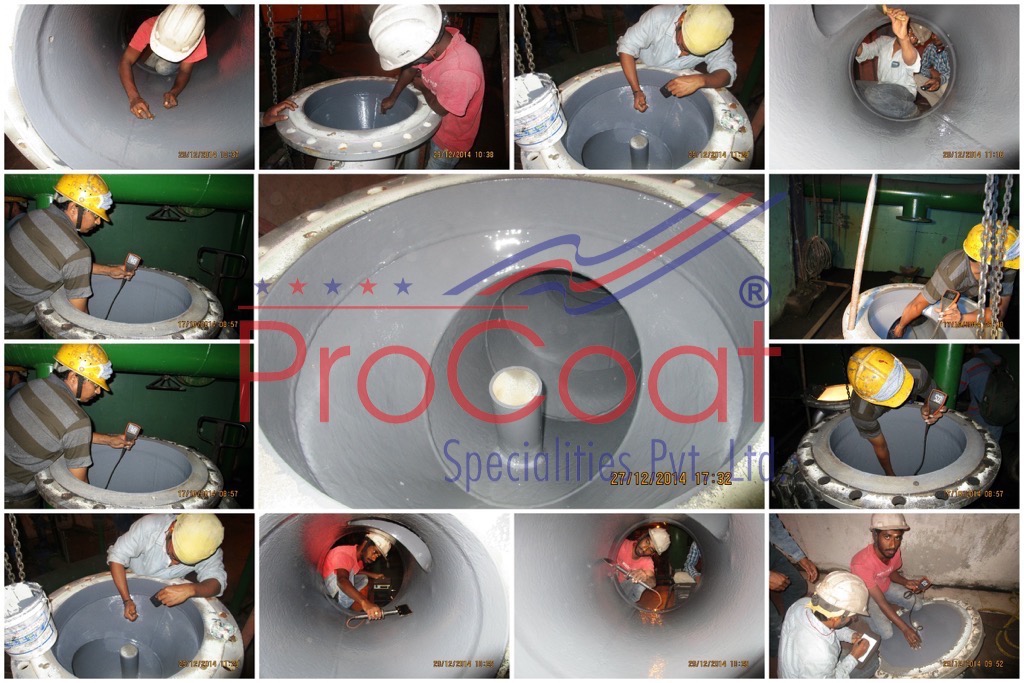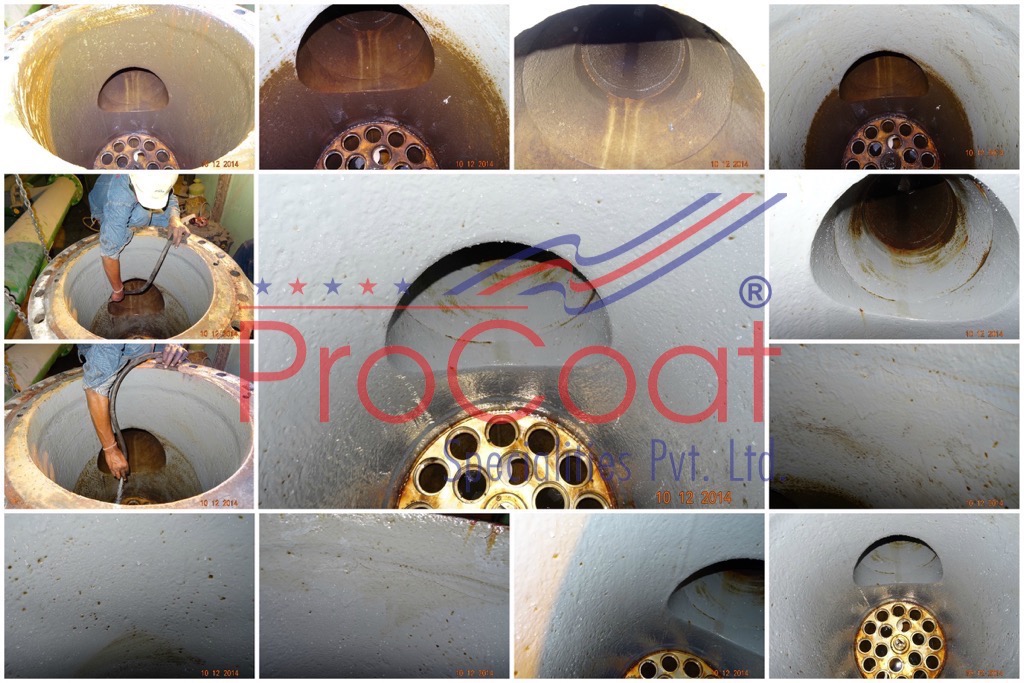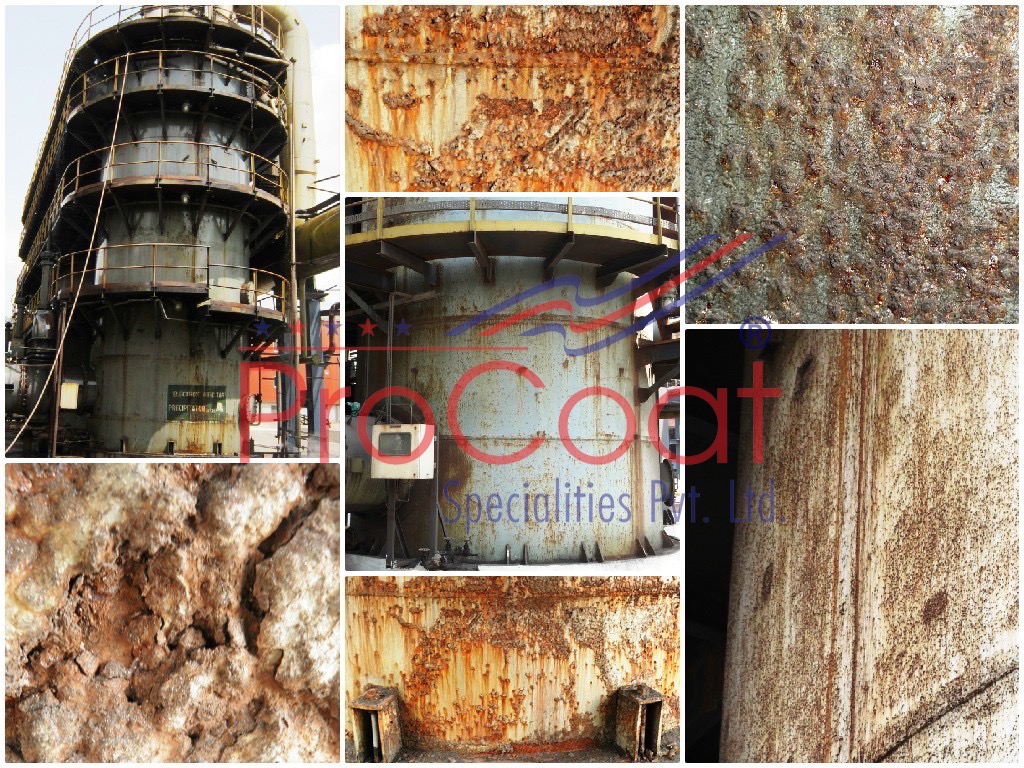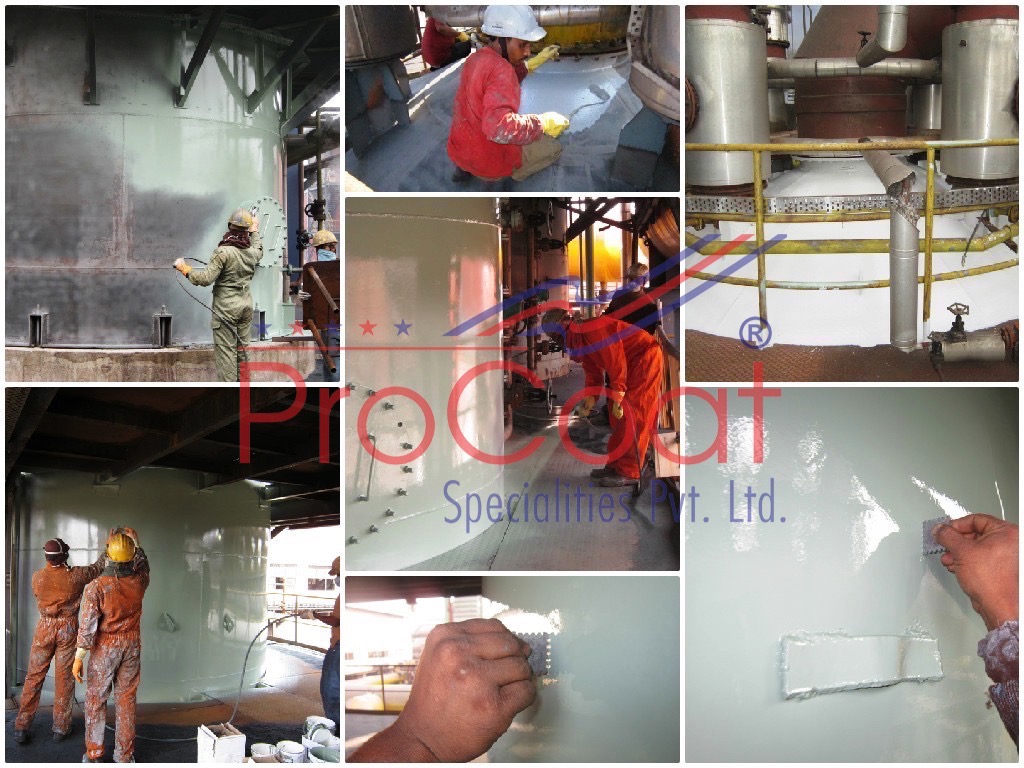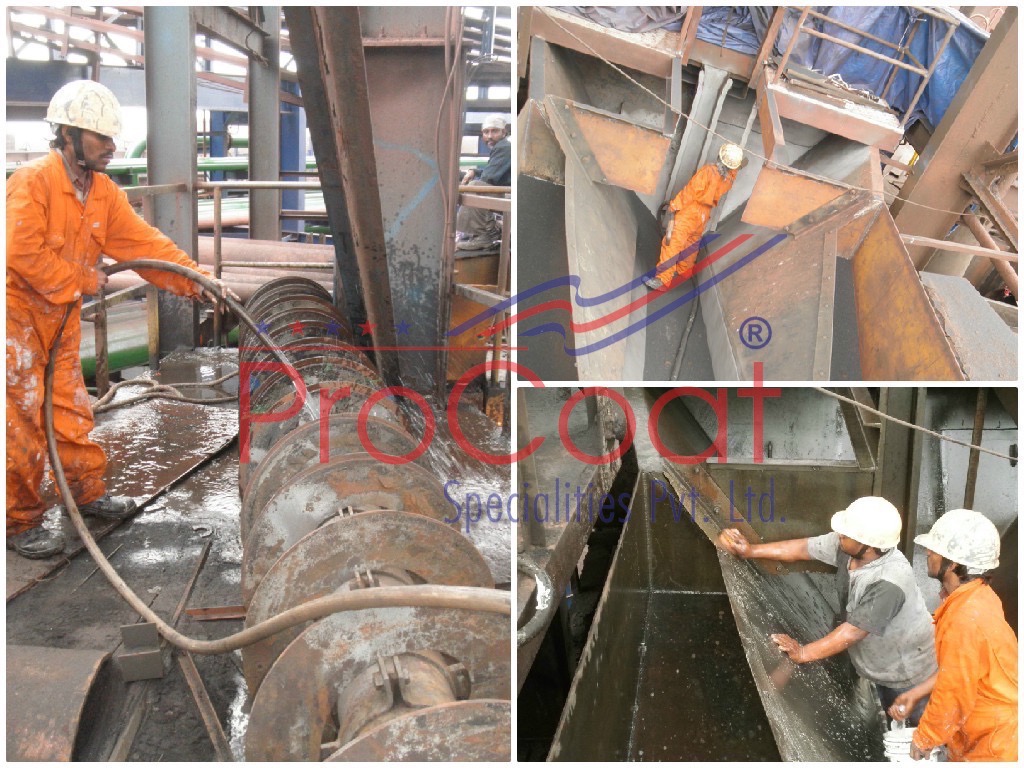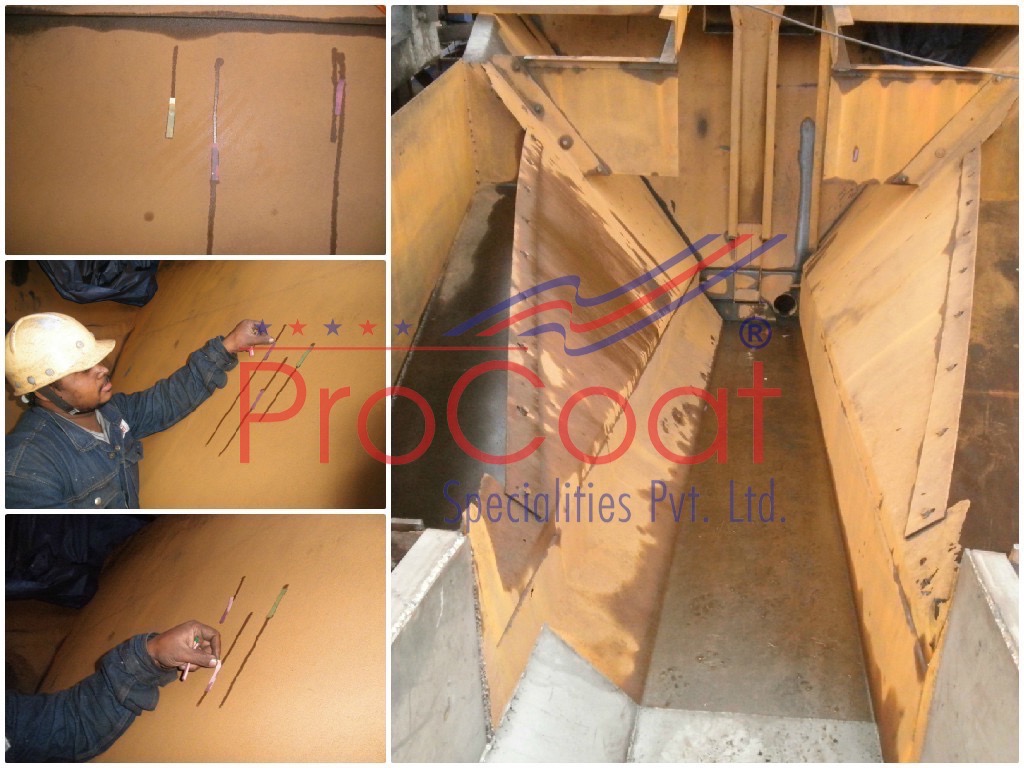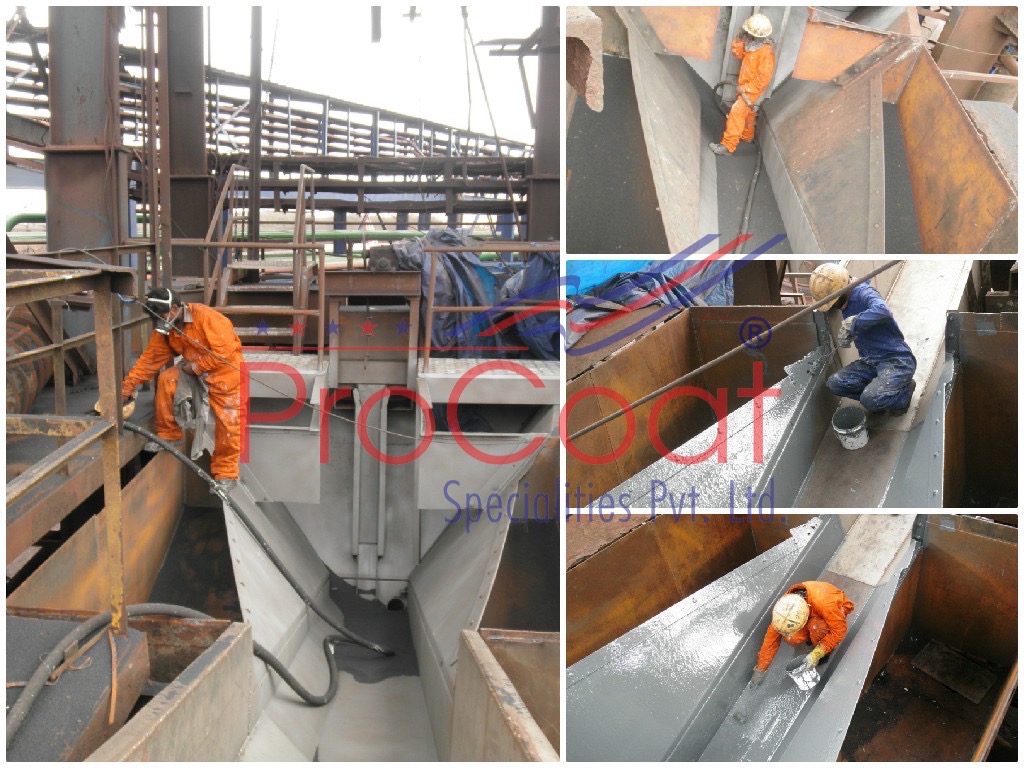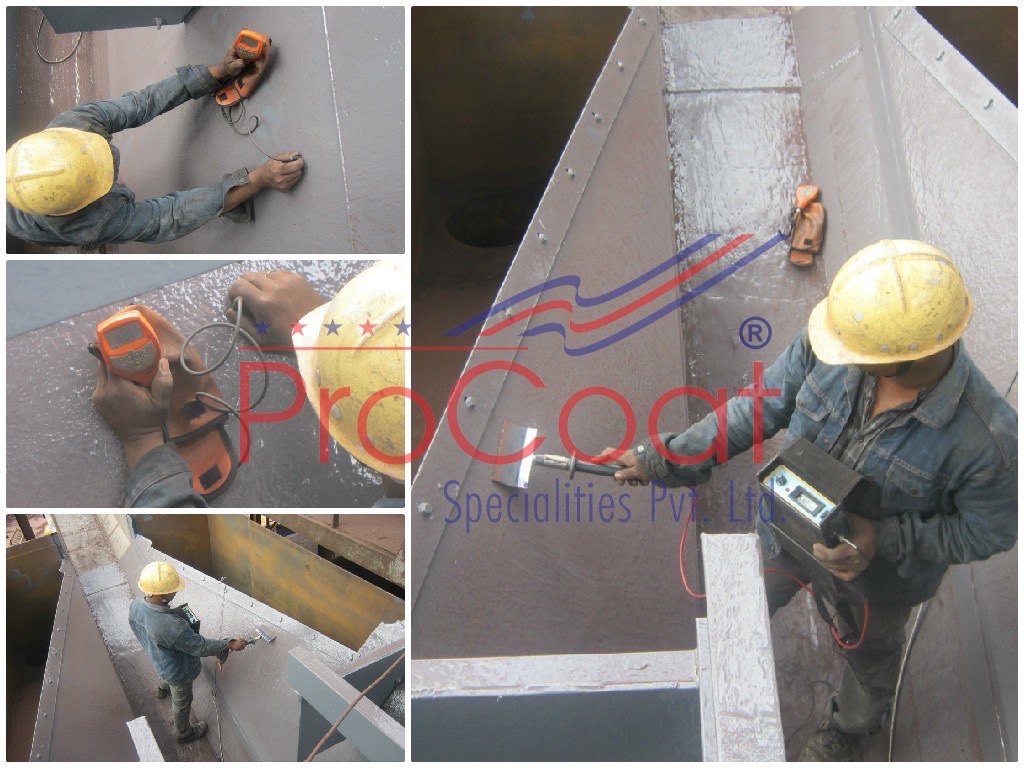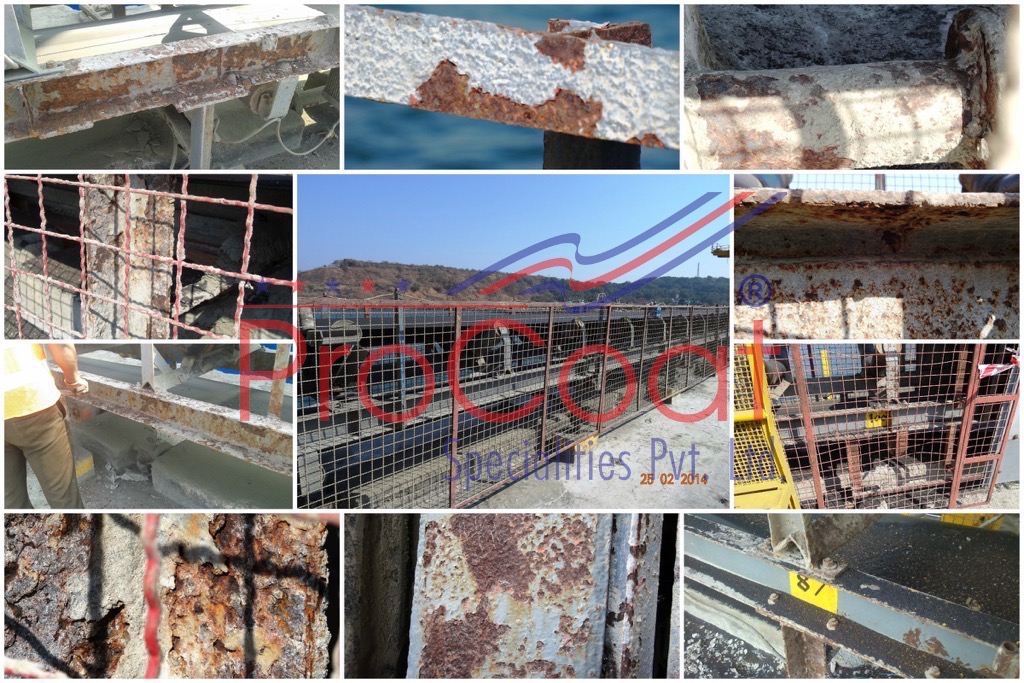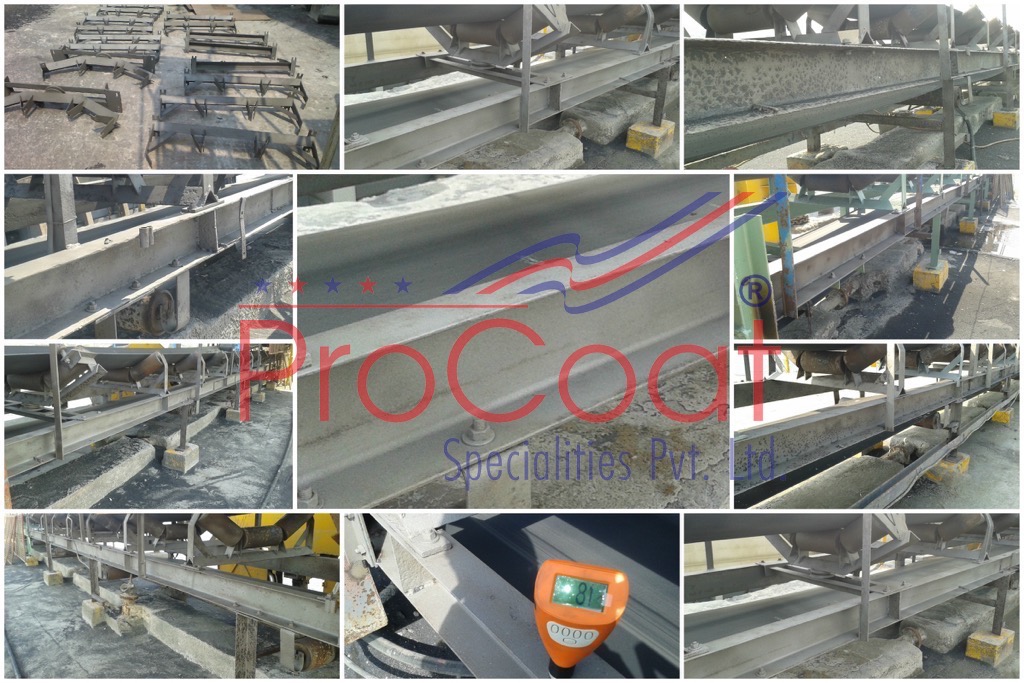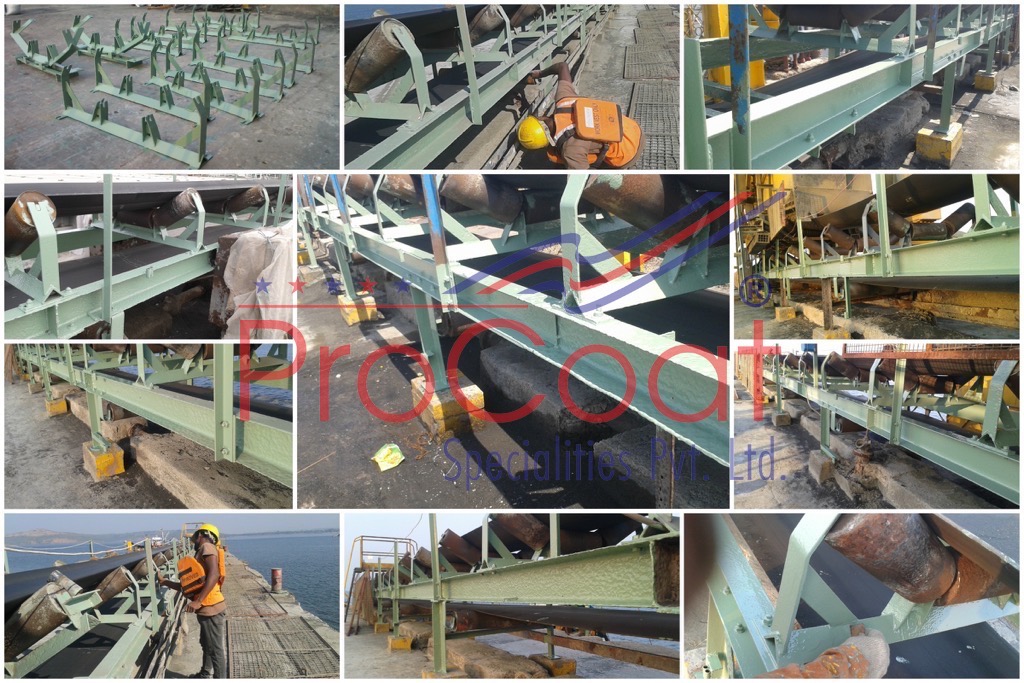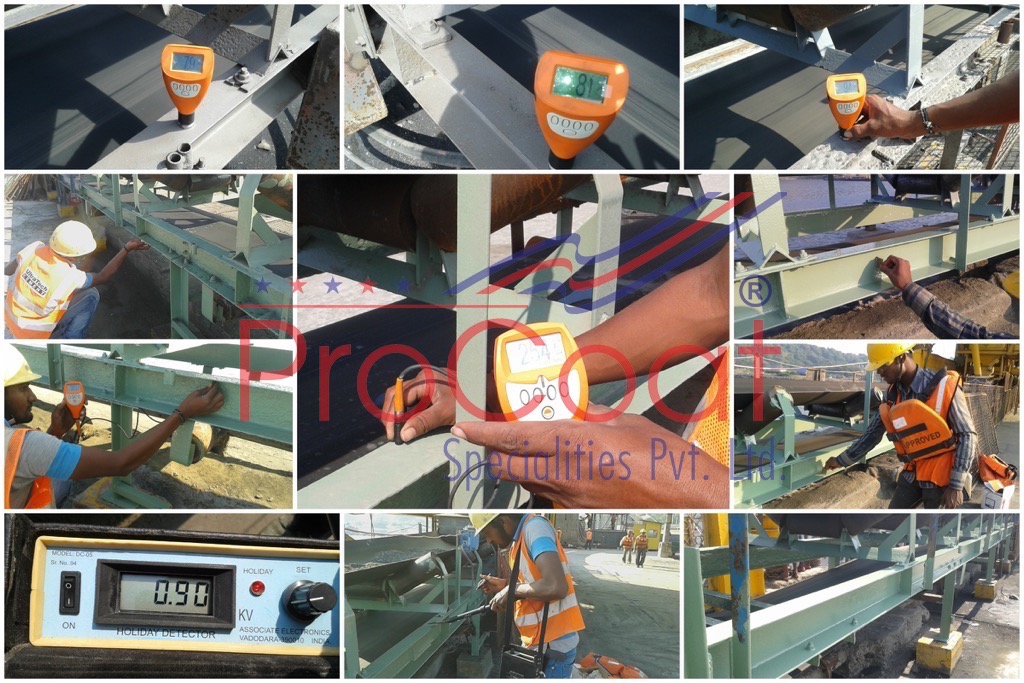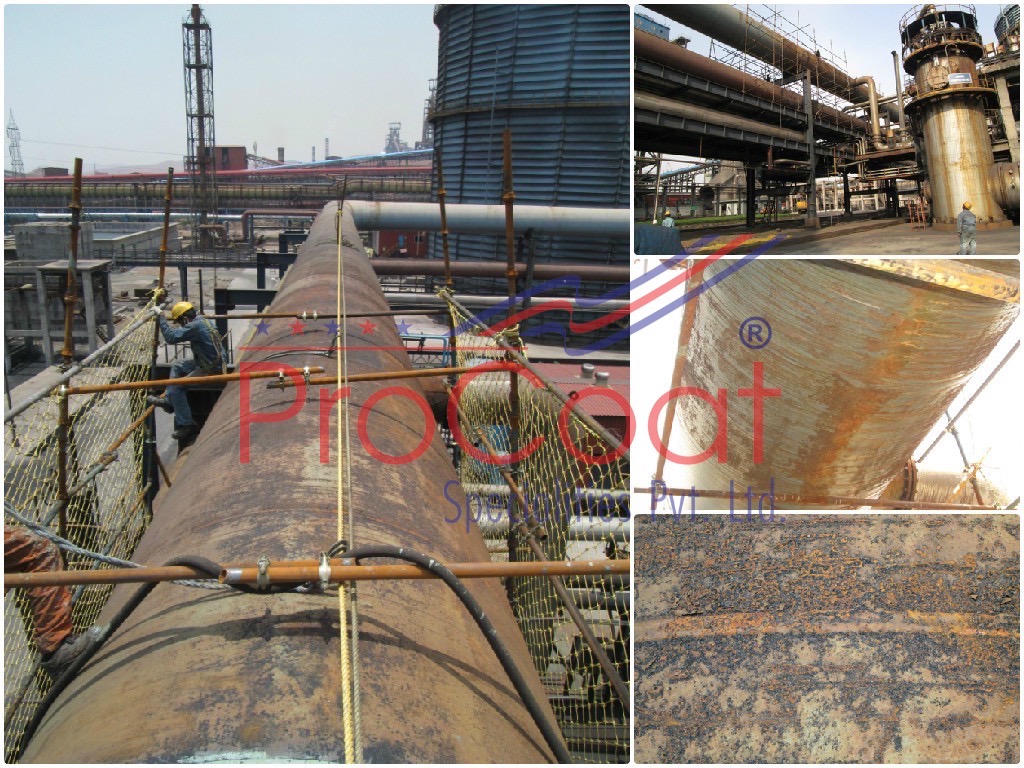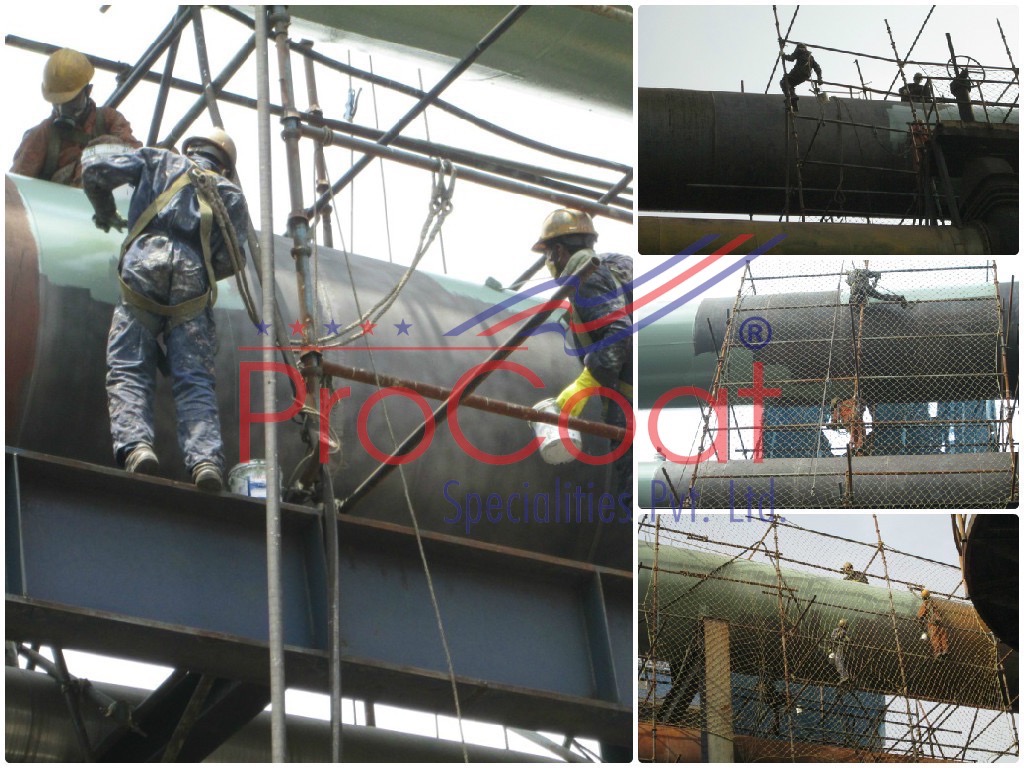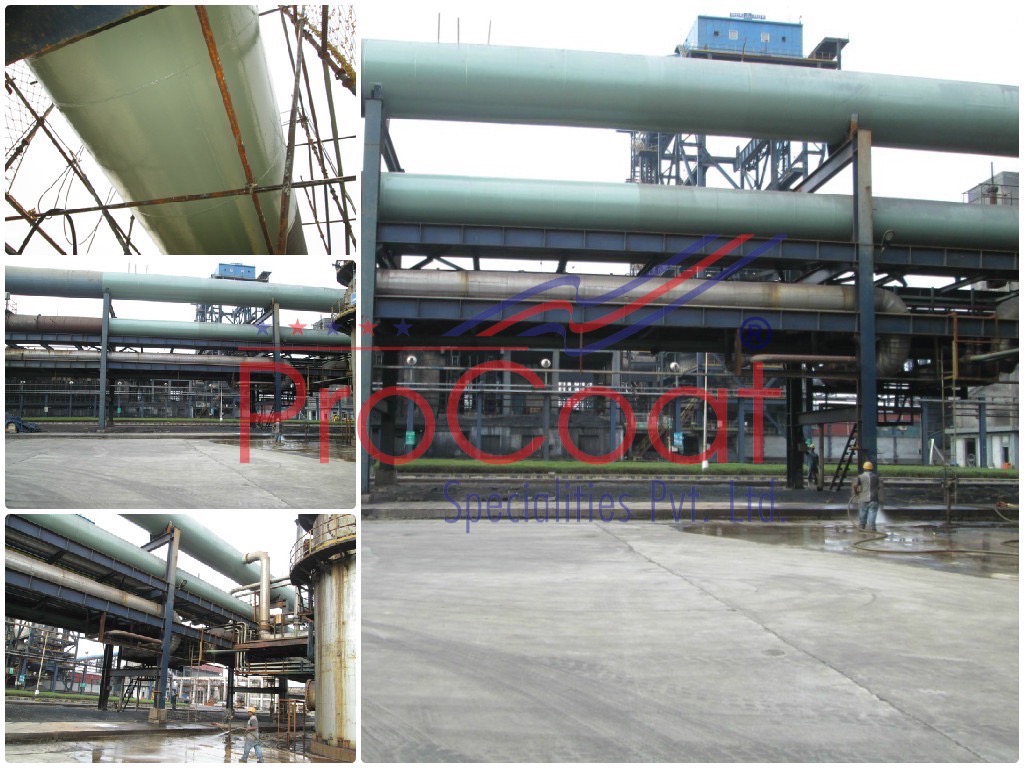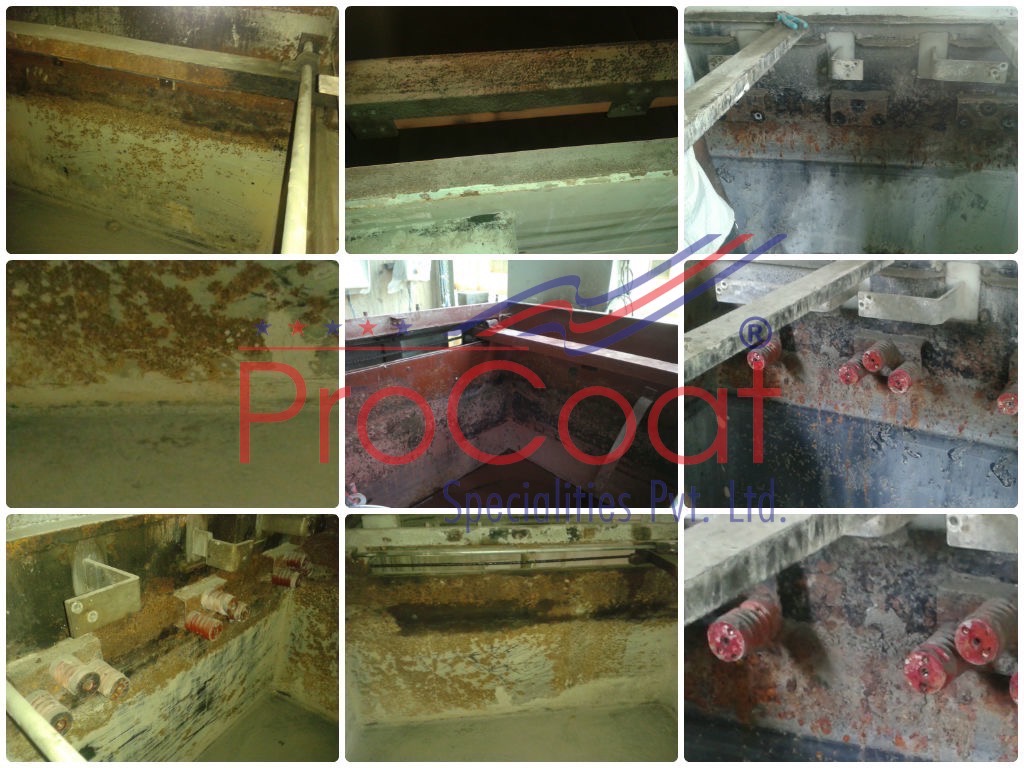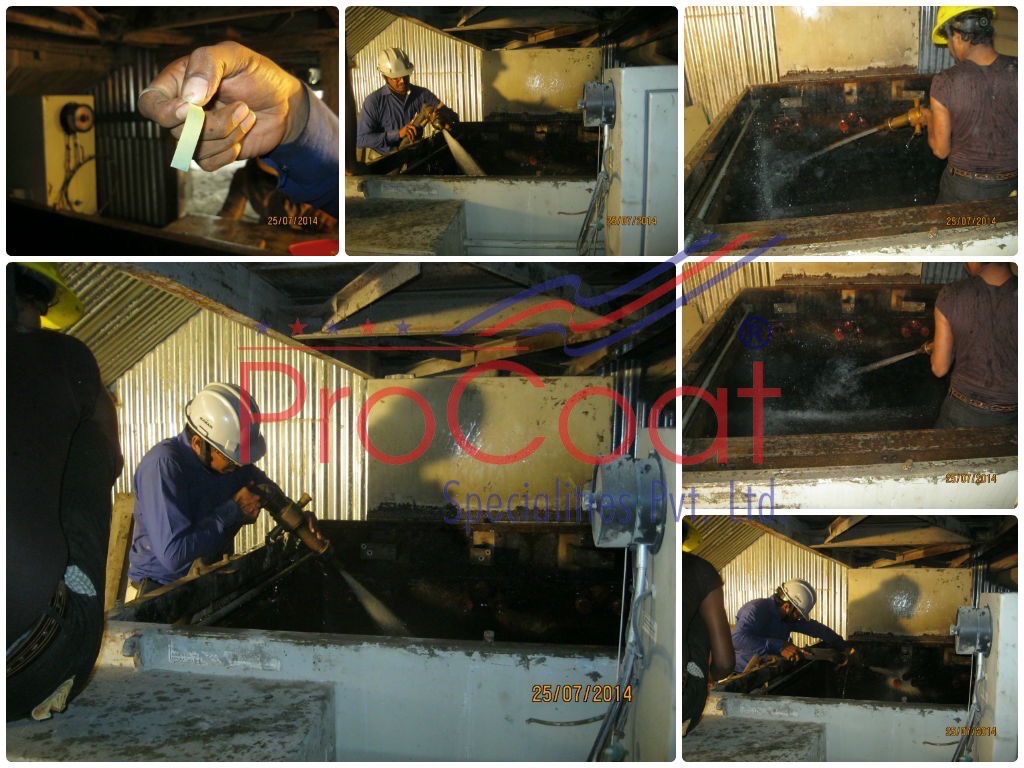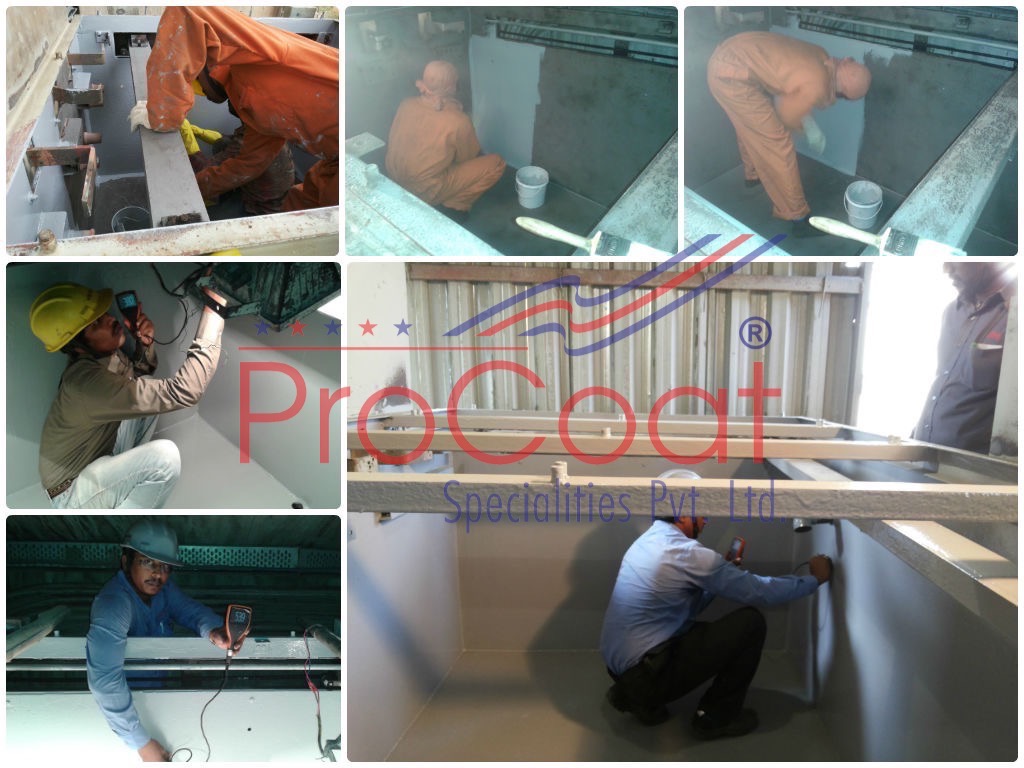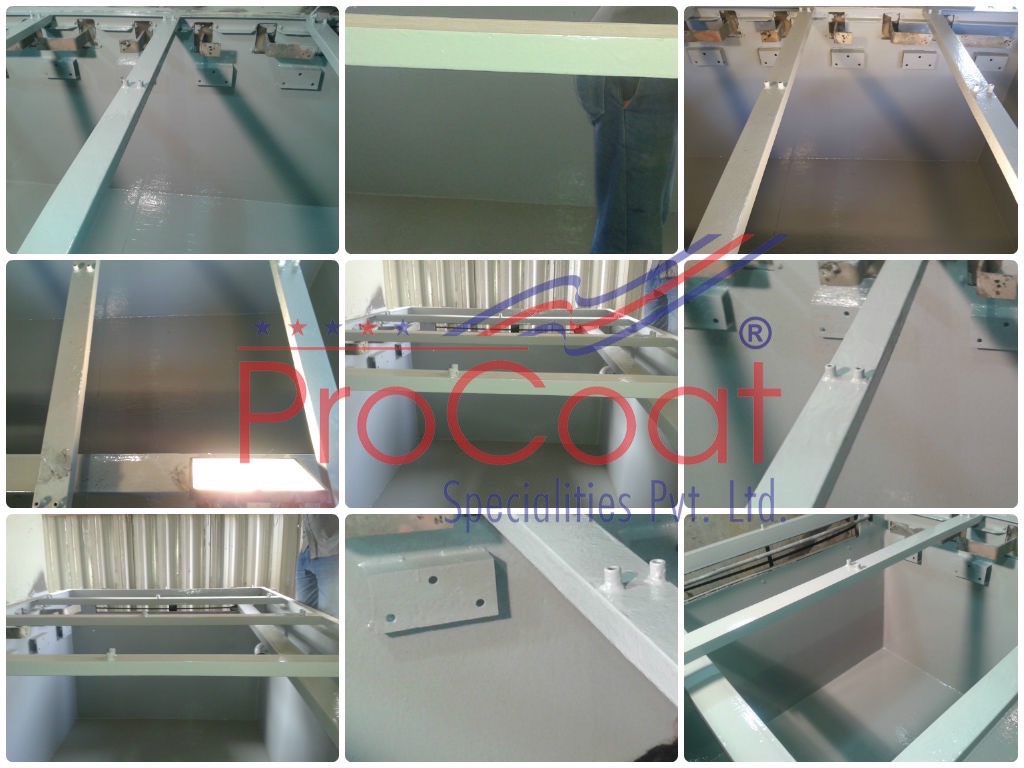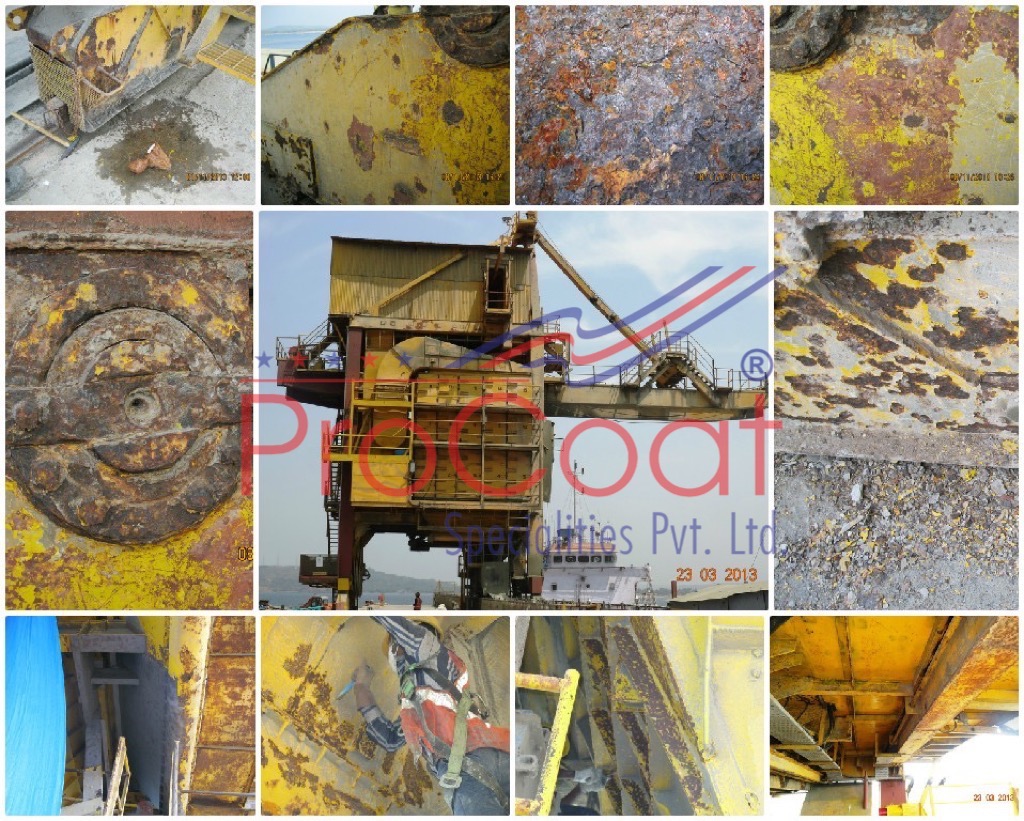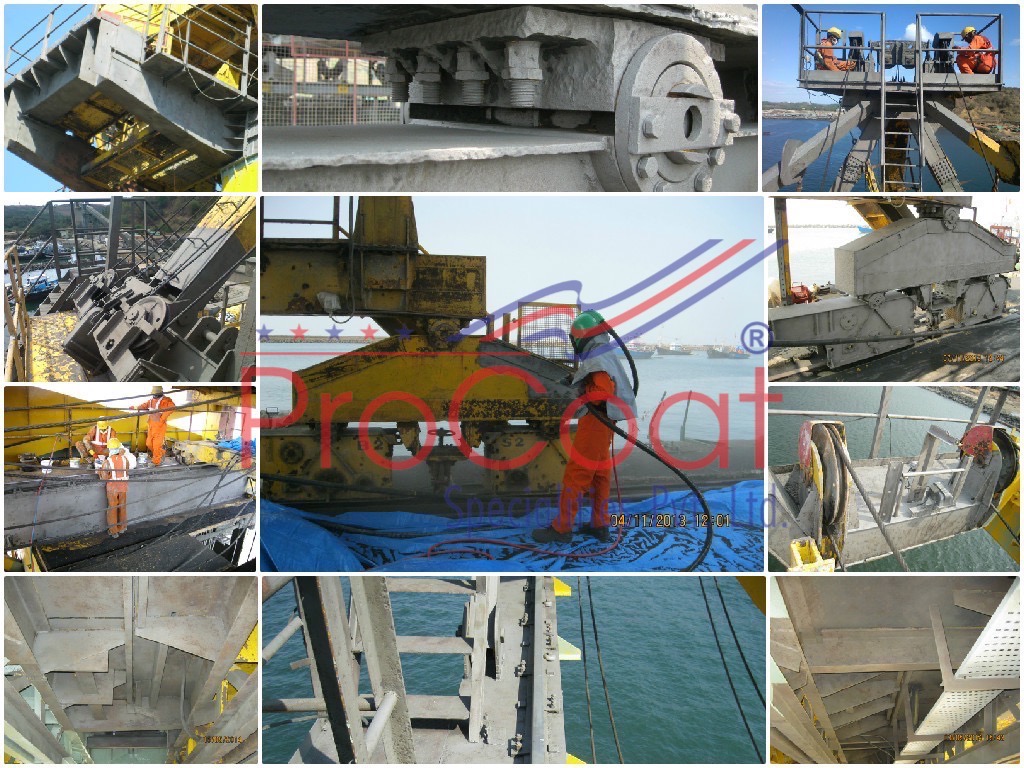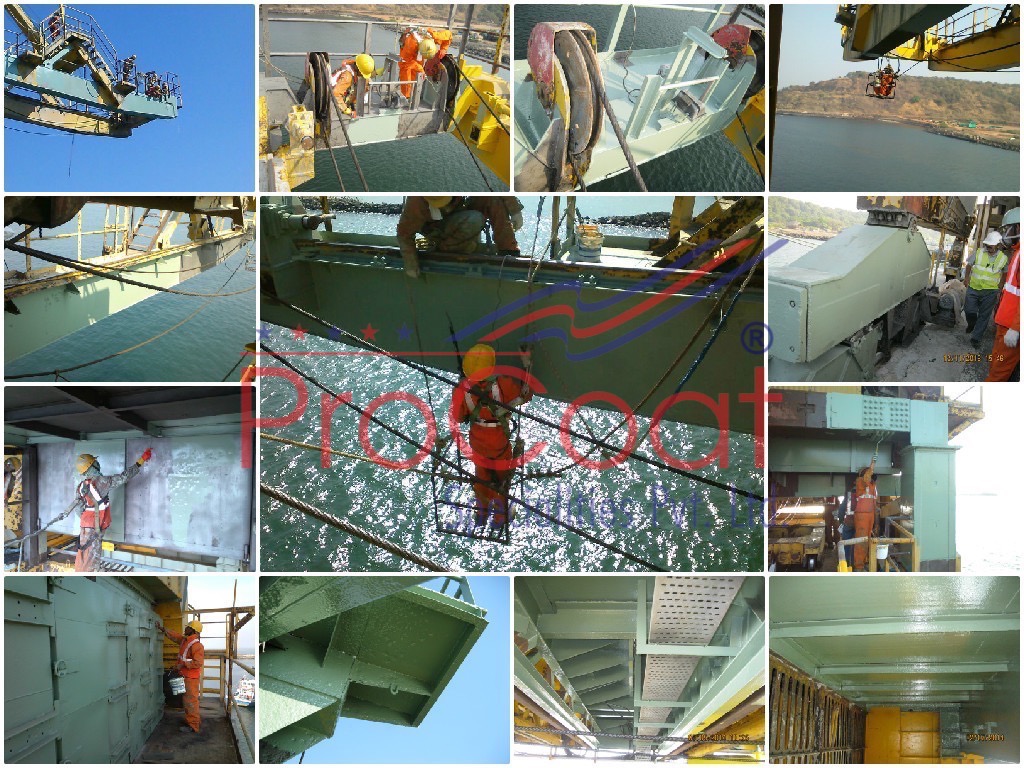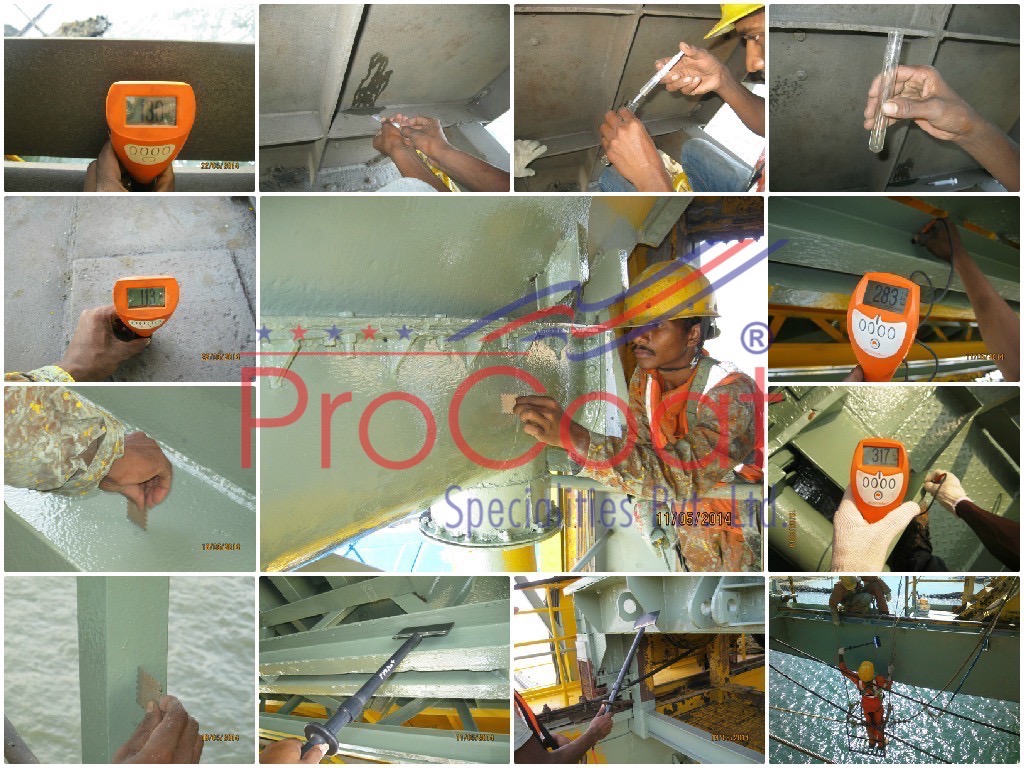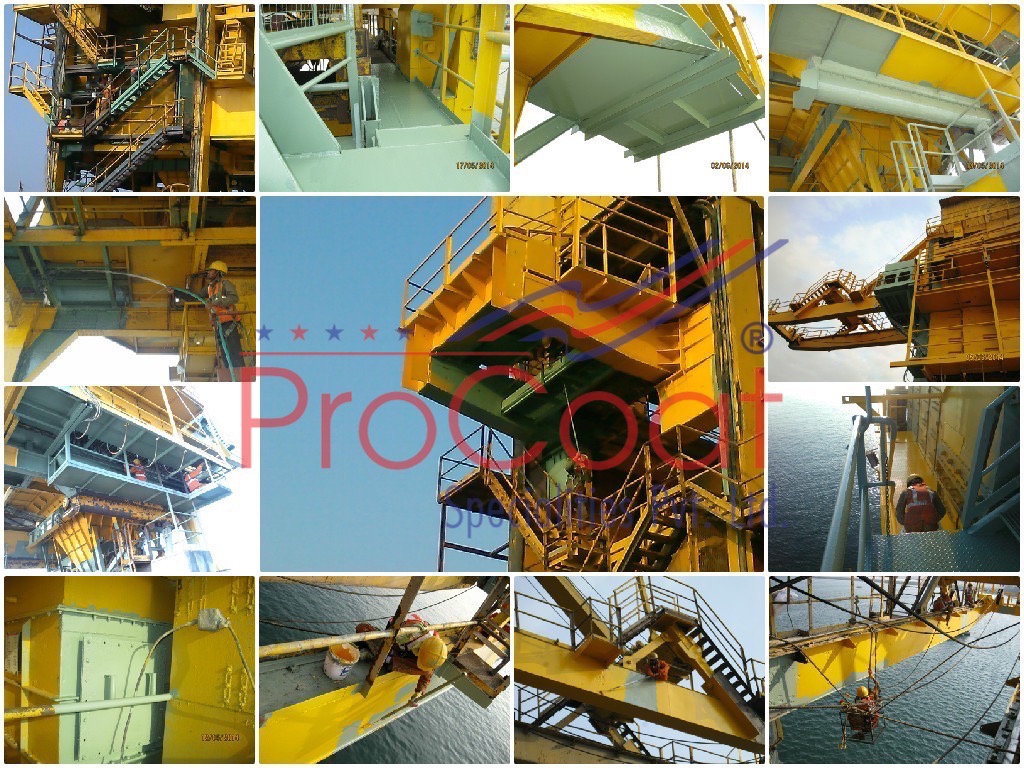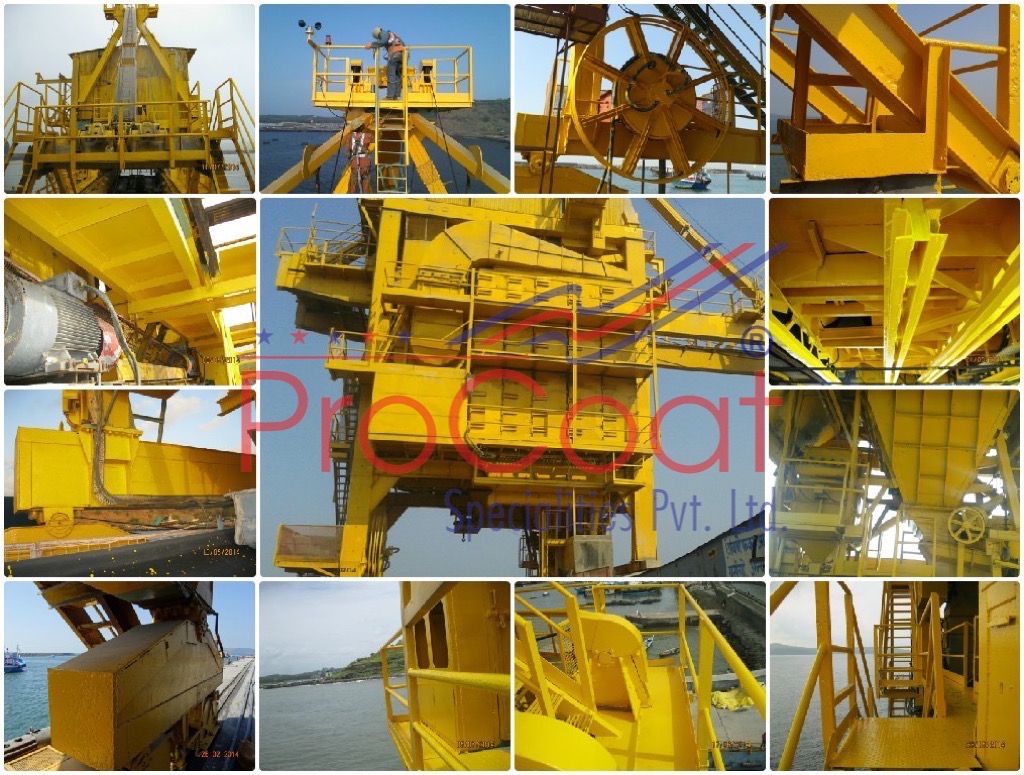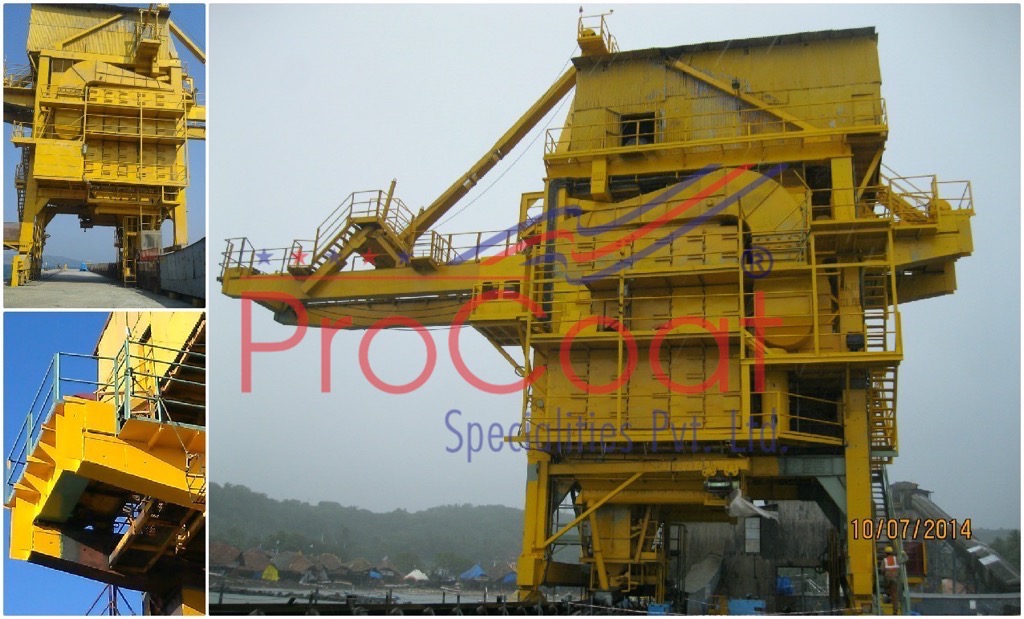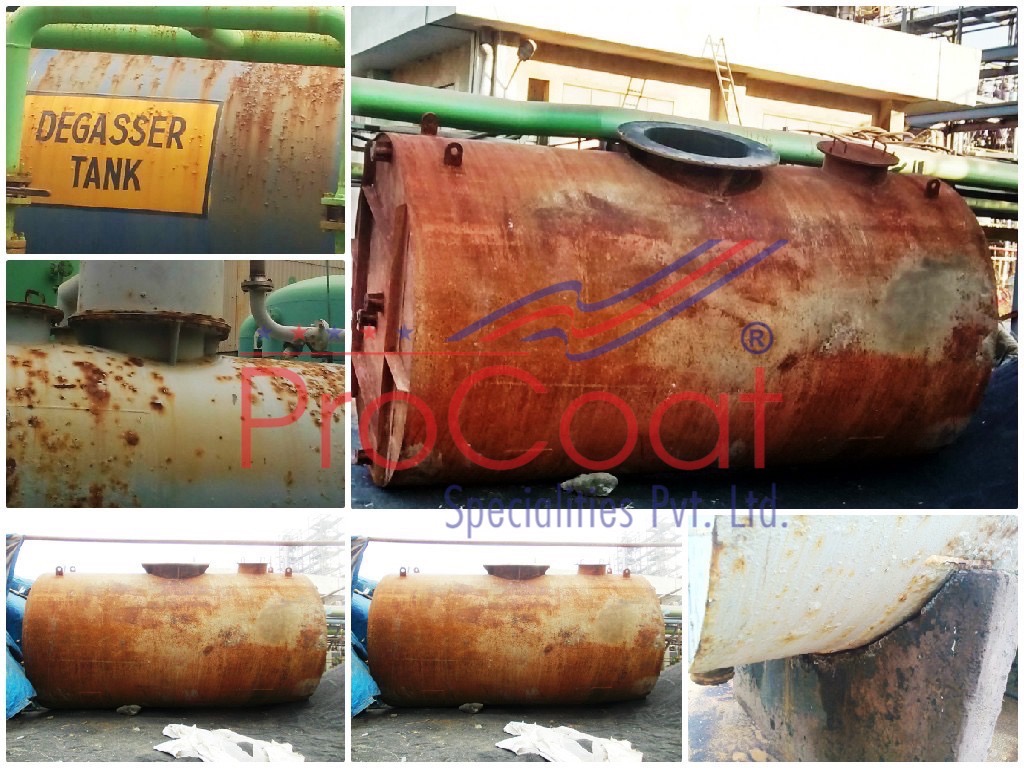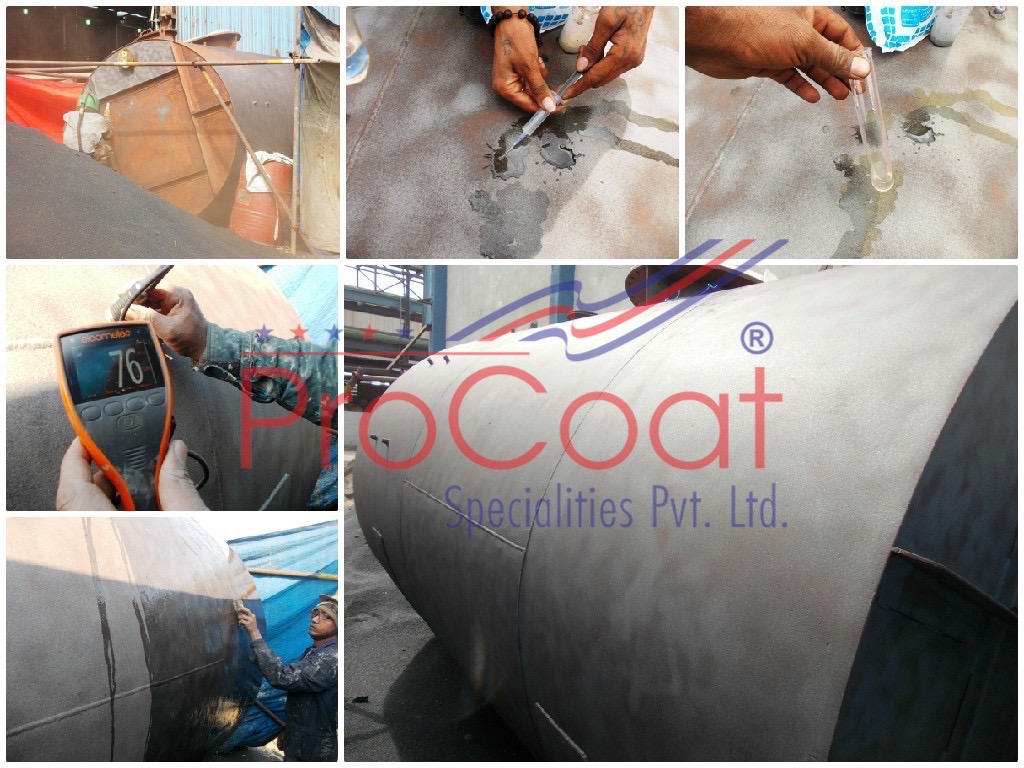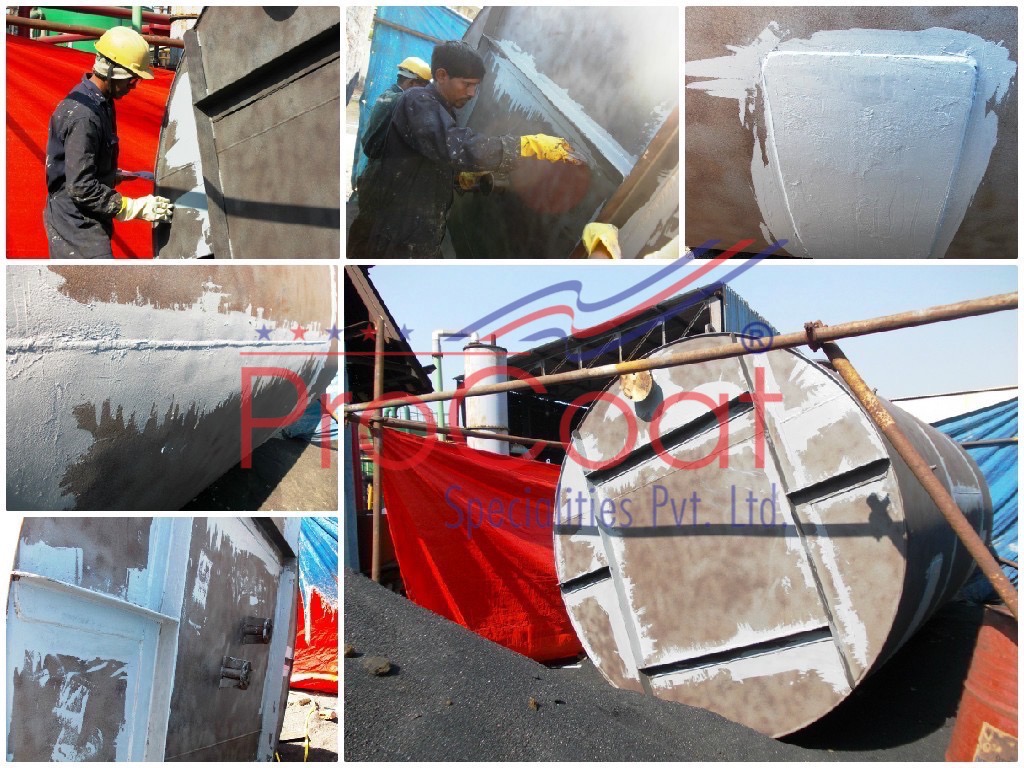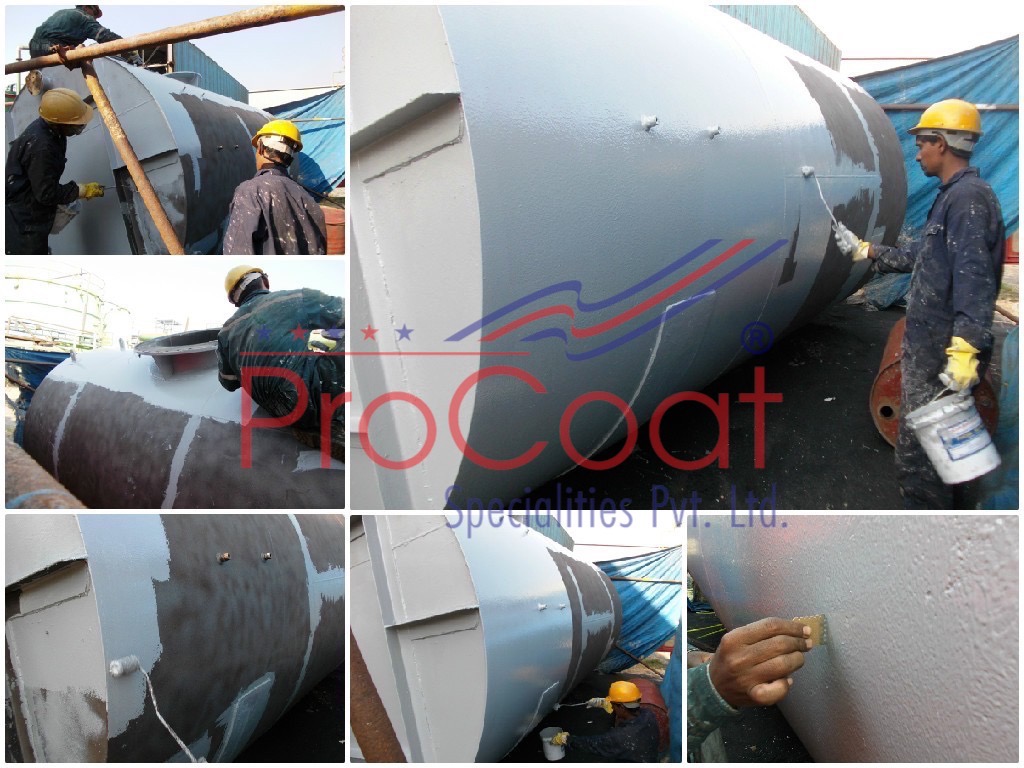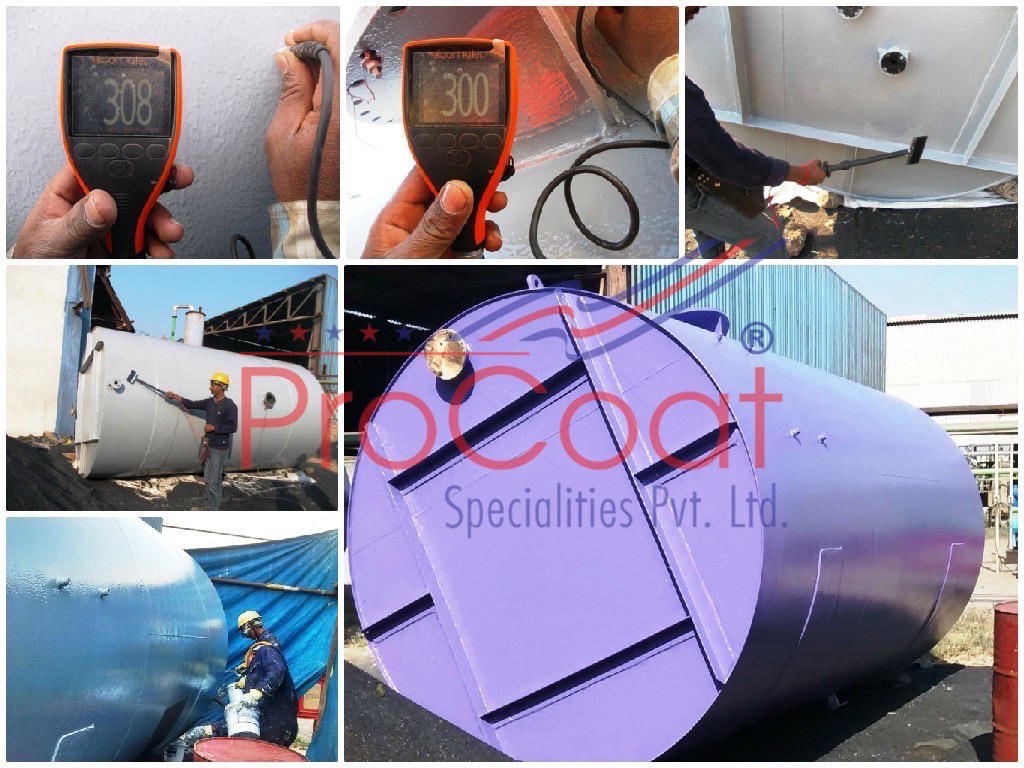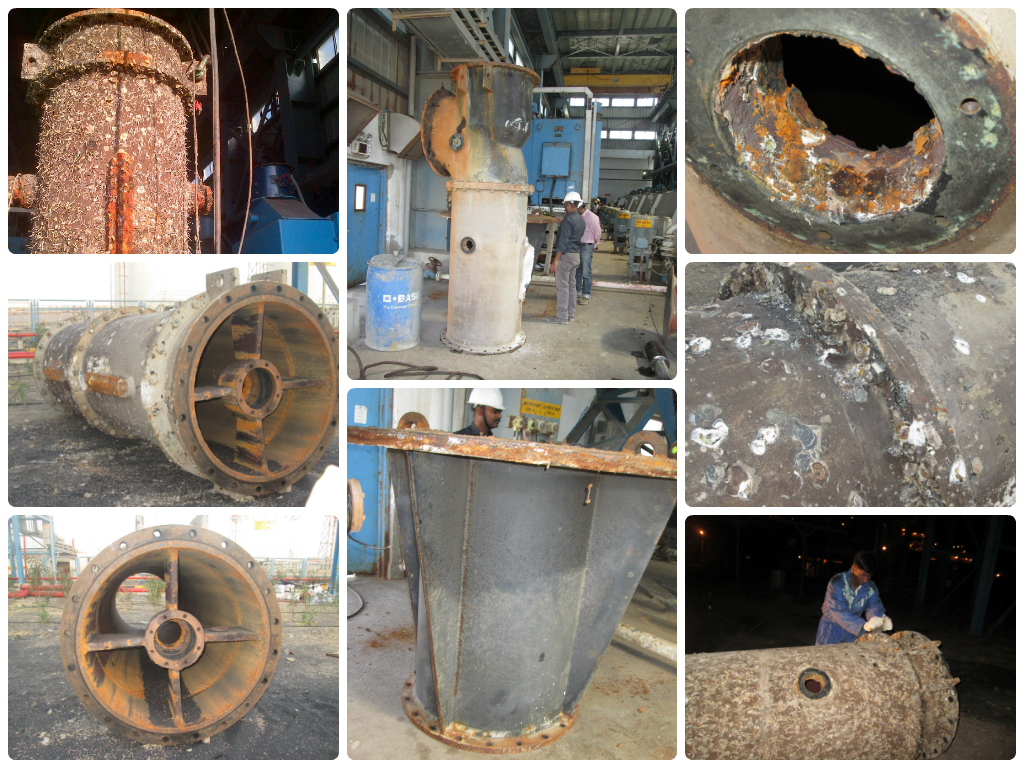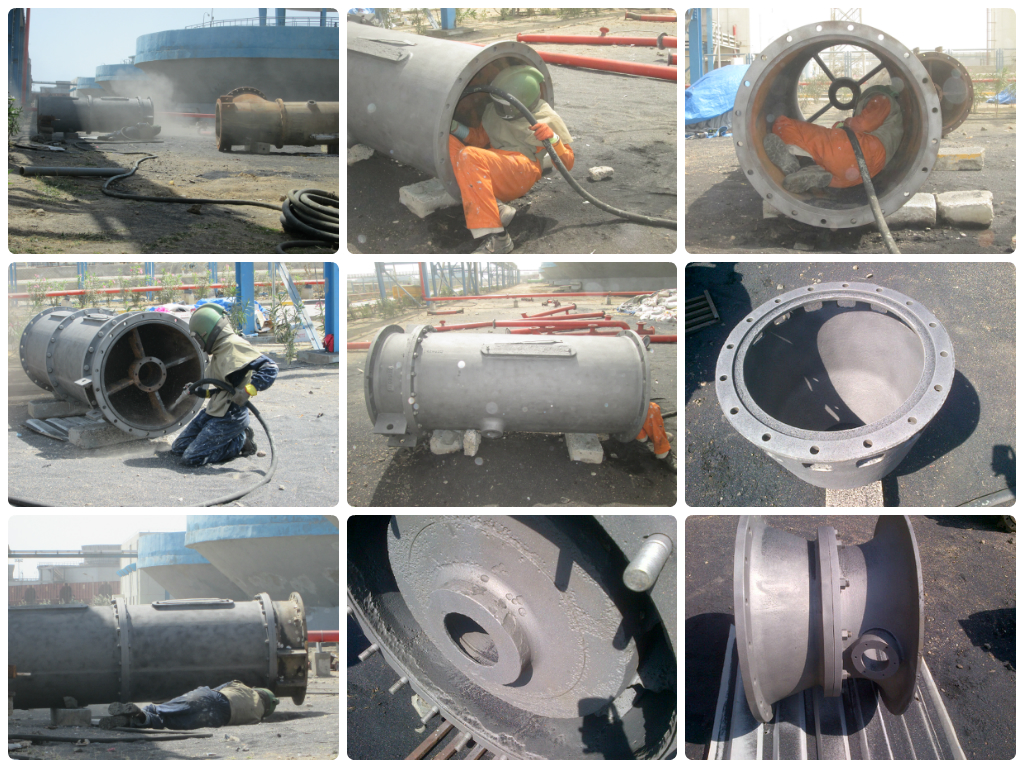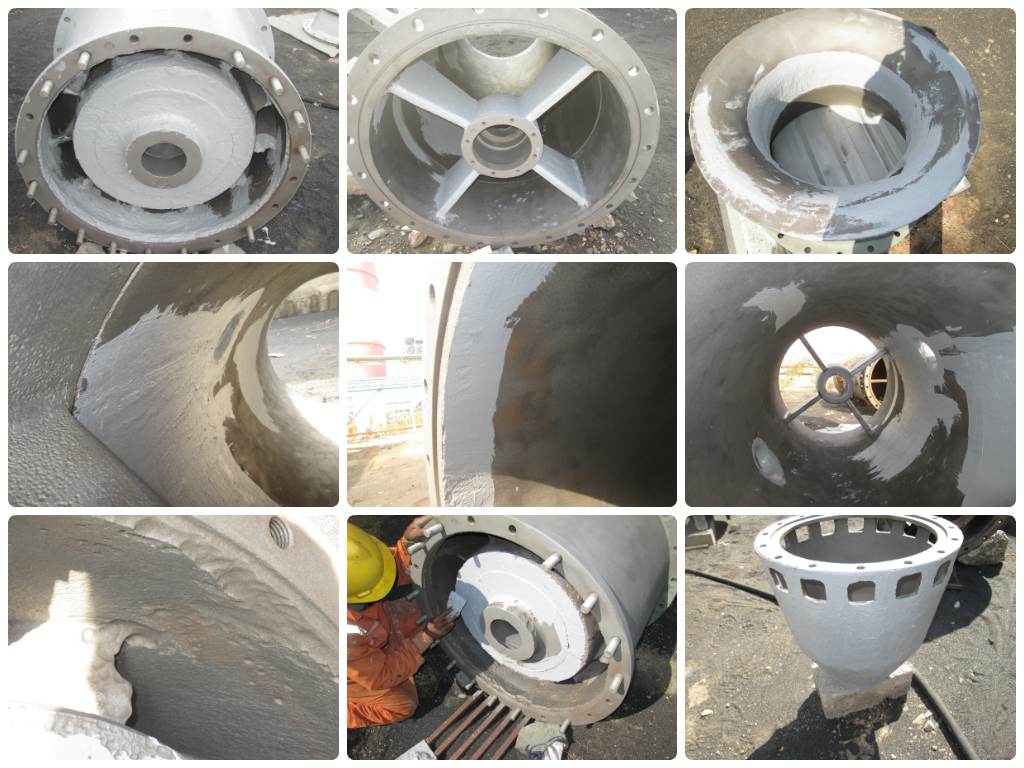Bag House Chemical Corrosion Protection Coating
During the operation, the gases entering the bag house with high velocity, loaded with fine dust is forced to hit the internal surface of the doors, structures in all directions abrading the metal substrate leading to erosion of metal. Along with this, chemical attack is taking place on the bag house doors due to the reaction from released oxides of sulphur in the presence of moisture forming mild Sulphuric Acid , which is getting settled over the mild steel substrates. This is giving rise to an electrochemical reaction leading to high degree of corrosion, causing loss of metal thickness, that which can be seen as thick rust flakes and also causing pin holes due to localized attack. The formed corrosion deposits is getting removed due to the abrasion of dust particles, thereby exposing fresh metal to further chemical attack. The air from the atmosphere entering the system through these pin holes, is giving rise to increase in energy consumption for operation of the bag house.
The surface inside was blast cleaned twice using copper slag abrasive medium to remove thick corrosion deposits followed up with detergent cleaning & hydro jet water washing. Once the surface was dried up, blast cleaning process was repeated to ensure a surface roughness of 75+ microns average to Sa 2.5 Swedish Standards. Over the prepared surface coating application was carried out using nylon rollers and tynex brushes. The applied coating was checked for thickness levels using Elcometer WFT Gauge intermittently and cross-verified using Elcometer DFT Gauge on curing. Holiday Spark Testing was carried out over the entire coated surface to make sure complete coating integrity and examine any flaws during the application works.
After completion of the coating works & quality checks being performed, the bag house was put back into operations again. Based on the operating conditions of this huge bag house equipment, the blast cleaning and application of coating was carried out in a phased manner in order to implement quality applications methods that play a key vital role in offering rigid protection

